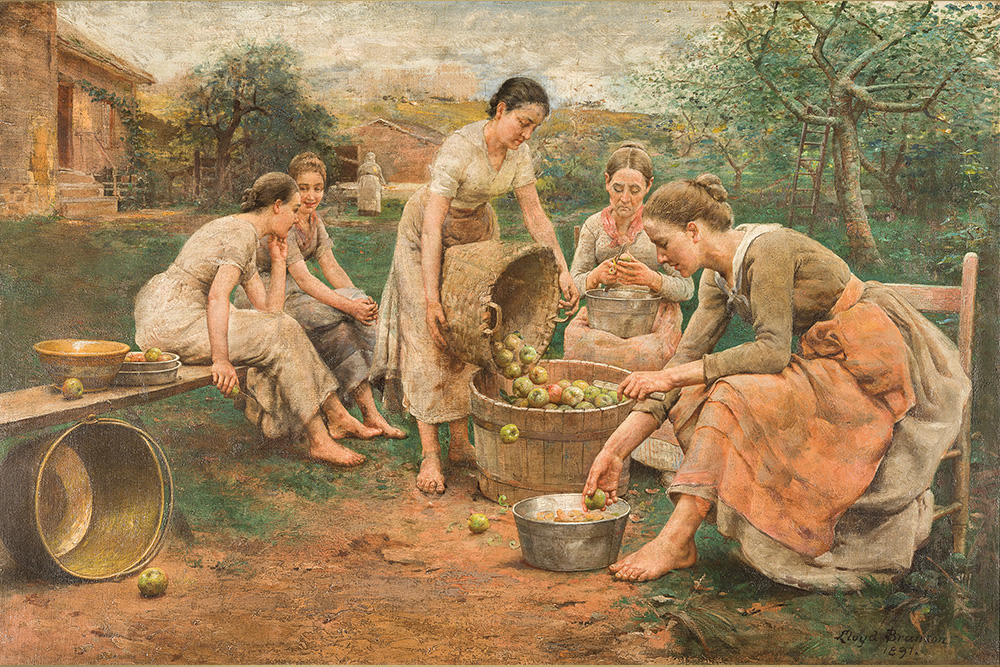Tennessee Harvest focuses on 19th- and early 20th-century painters taking both realist and impressionist approaches to the depiction of food and its cultivation in the state. A companion show to Farm to Table: Art, Food, and Identity in the Age of Impressionism, this exhibition shows how artists like Lloyd Branson, George Chambers, Gilbert Gaul, Cornelius Hankins, Willie Betty Newman, Catherine Wiley, and others absorbed and adapted European influences in both subject matter and style.
As with their French counterparts, these Tennessee artists often romanticized agricultural life. Showing strong, hard-working farmers and harvesters, they celebrate rural self-sufficiency and resiliency. Intentionally or not, this reinforced the perception of the turn-of-the-century South as a distinctly agricultural economy, even as manufacturing and other industries were on the rise. The paintings also warrant study for subjects they omit—Black farmers, markets, and cooks. To present a more complete view, the exhibition will include photographs showing the broader realities of food production across the state.
Organized by the Frist Art Museum and co-curated by Mark Scala, Chief Curator, Frist Art Museum, and Candice Candeto, Senior Curator of Fine and Decorative Art, Tennessee State Museum.
George W. Chambers. In the Tennessee Mountains, 1887. Oil on canvas; 47 x 63 x 2 in. Courtesy of Tennessee State Museum
Exhibition gallery

Catherine Wiley. Morning Milking Time, ca. 1915. Oil on canvas; 46 x 36 1/4 in. Knoxville Museum of Art, 2012 joint purchase of the Calvin M. McClung Historical Collection, Knox County Public Library, and the KMA with funds provided by the C. M. McClung Collection Endowment, Natalie and Jim Haslam, Ann and Steve Bailey, Ellen “Sis” Mitchell, Kay and Jim Clayton, Laura and Jason Bales, Patricia and Alan Rutenberg, John Z. C. Thomas, and Kimbro Maguire and Penny Lynch
Exhibition supporters


The Frist Art Museum is supported in part by








